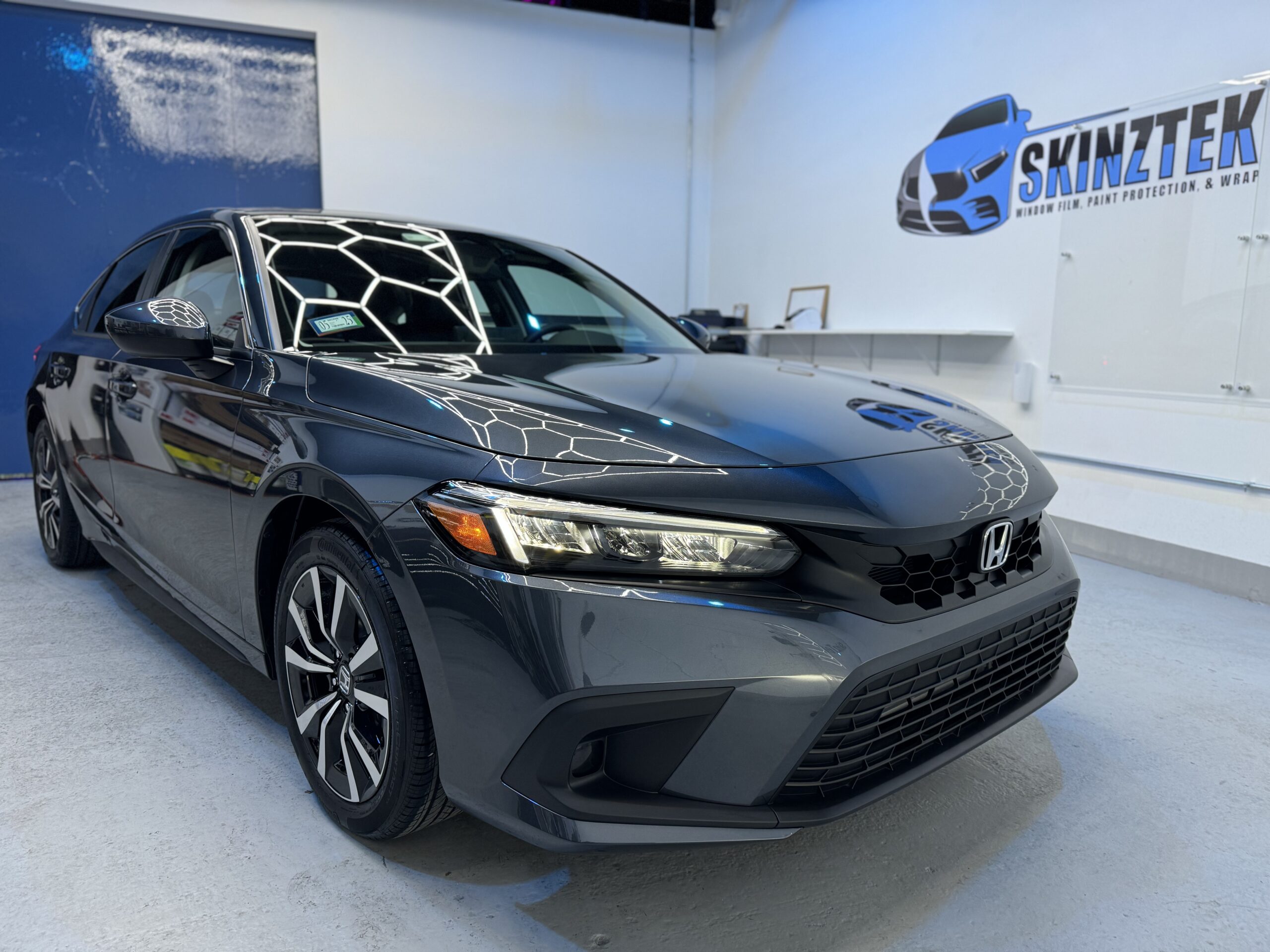Paint Protection Film (PPF) is one of the best ways to shield your car’s exterior from scratches, chips, and environmental damage. But the job isn’t done once the film is applied—proper post-installation care is essential to maximize the lifespan of your PPF and keep your car looking its best.
Whether you just had PPF installed on your daily driver or your weekend show car, here’s a step-by-step guide to help you care for it like a pro. And remember, SkinzTek offers a complimentary 2-week checkup to ensure everything is settling correctly.

1. The First 48 Hours: Let It Set
The first two days after installation are critical. PPF uses adhesives that need time to fully bond with your car’s surface. During this period, it’s normal to see small bubbles or a slightly hazy appearance—these will disappear as the adhesive cures.
What to do:
- Avoid washing or exposing your car to water.
- Park indoors or in the shade if possible.
- Resist the urge to touch or press on the film, especially around the edges.
What to avoid:
- Automatic car washes or high-pressure water.
- Parking under trees where sap or debris might fall onto the film.
- Driving in heavy rain or wet conditions, if possible.
2. The First Two Weeks: Handle with Care
The adhesive continues curing for about two weeks, depending on temperature and humidity. During this time, the film will settle into place, and any lingering moisture will evaporate.
What to do:
- Hand wash only with mild soap and soft microfiber cloths.
- Inspect edges for lifting but don’t try to fix it yourself—call your installer if needed.
- Avoid abrasive cleaning tools or rough towels.
Pro Tip: If you see bubbles during this time, don’t panic. Moisture bubbles are common and typically disappear within two weeks as the film settles.
Don’t forget: Schedule your complimentary 2-week checkup with SkinzTek. We’ll inspect the film, address any concerns, and ensure it’s curing correctly.
3. Long-Term Maintenance: Keep It Clean
PPF is designed to handle the rigors of daily driving, but regular maintenance helps it last longer and look better. Dirt, bird droppings, and tree sap can damage even the toughest films if left unchecked.
Washing Tips:
- Wash your car every 2-3 weeks with pH-neutral, PPF-safe soap.
- Use a microfiber wash mitt and dry with a soft microfiber towel.
- Avoid direct sunlight when washing to prevent water spots.
What to avoid:
- Automatic car washes with spinning brushes—they can cause scratches or peel film edges.
- Harsh chemicals or solvent-based cleaners.
- Waxing with products that contain petroleum distillates, which can damage the film.
4. The Don’ts of PPF Care
Even with the best maintenance practices, some habits can shorten the lifespan of your PPF. Keep these in mind:
- Don’t use pressure washers near film edges—water can lift the adhesive.
- Don’t scrub aggressively—PPF is durable, but excessive force can scratch the surface.
- Don’t pick at the edges if they start to lift. Contact your installer instead.
5. Dealing with Stains, Bugs, and Bird Droppings
PPF does a great job of resisting stains, but contaminants like bug splatter, bird droppings, and tree sap can still cause damage if left for too long.
How to clean:
- Rinse the area with water as soon as possible.
- Use a gentle, PPF-safe cleaner and a microfiber cloth.
- For stubborn stains, apply isopropyl alcohol to a microfiber cloth and dab gently—never rub.
Pro Tip: Regularly applying a PPF-specific sealant helps prevent contaminants from sticking in the first place.
6. Self-Healing PPF: Let It Do Its Job
Many modern PPFs come with self-healing properties that repair minor scratches when exposed to heat. But for the film to work properly, you need to know how to activate this feature.
- Park your car in the sun for a few hours. The heat will cause light swirl marks to disappear.
- For faster results, use a heat gun or hairdryer on a low setting, holding it a few inches away from the surface.
What not to do: Don’t overheat the film, and don’t attempt self-healing on deep scratches or damaged edges—those require professional attention.
7. Seasonal Maintenance Tips for Chicago Drivers
Living in Chicago means your car is exposed to extreme conditions—from icy, salt-covered streets in winter to sun-baked roads in summer. Here’s how to adapt your PPF care routine for seasonal challenges:
Winter:
- Rinse off road salt regularly to prevent buildup.
- Use touchless car washes if outdoor washing isn’t possible.
Summer:
- Park in shaded areas to minimize prolonged UV exposure.
- Apply a PPF-friendly spray sealant every few months to boost protection.
Spring/Fall:
- Inspect the film for damage after winter or heavy rains.
- Remove pollen and tree sap as soon as possible to avoid staining.
Common PPF Care Myths (And the Truth)
Myth 1: PPF Is Maintenance-Free
- PPF reduces maintenance, but it still needs regular washing and care to stay effective.
Myth 2: You Can Wax Over PPF Like Regular Paint
- Standard waxes can damage the film. Use PPF-specific sealants if you want to enhance shine.
Myth 3: All Scratches Will Heal Automatically
- Self-healing PPF can fix minor scratches, but deeper damage may require professional attention.
Why the 2-Week Checkup Matters
At SkinzTek, we offer a complimentary 2-week checkup with every PPF installation. This checkup allows us to:
- Inspect the film for proper adhesion.
- Address any bubbles or edge lifting.
- Answer your questions about maintenance.
This quick, hassle-free visit helps ensure your PPF cures correctly and provides maximum protection for your car.
Protect Your PPF Investment with SkinzTek
Paint Protection Film is a long-term investment in your car’s appearance and durability. With the right care—and regular check-ins like our complimentary 2-week inspection—you’ll enjoy years of worry-free protection from scratches, chips, and environmental damage.
Contact SkinzTek today to schedule your checkup or learn more about our PPF services.
